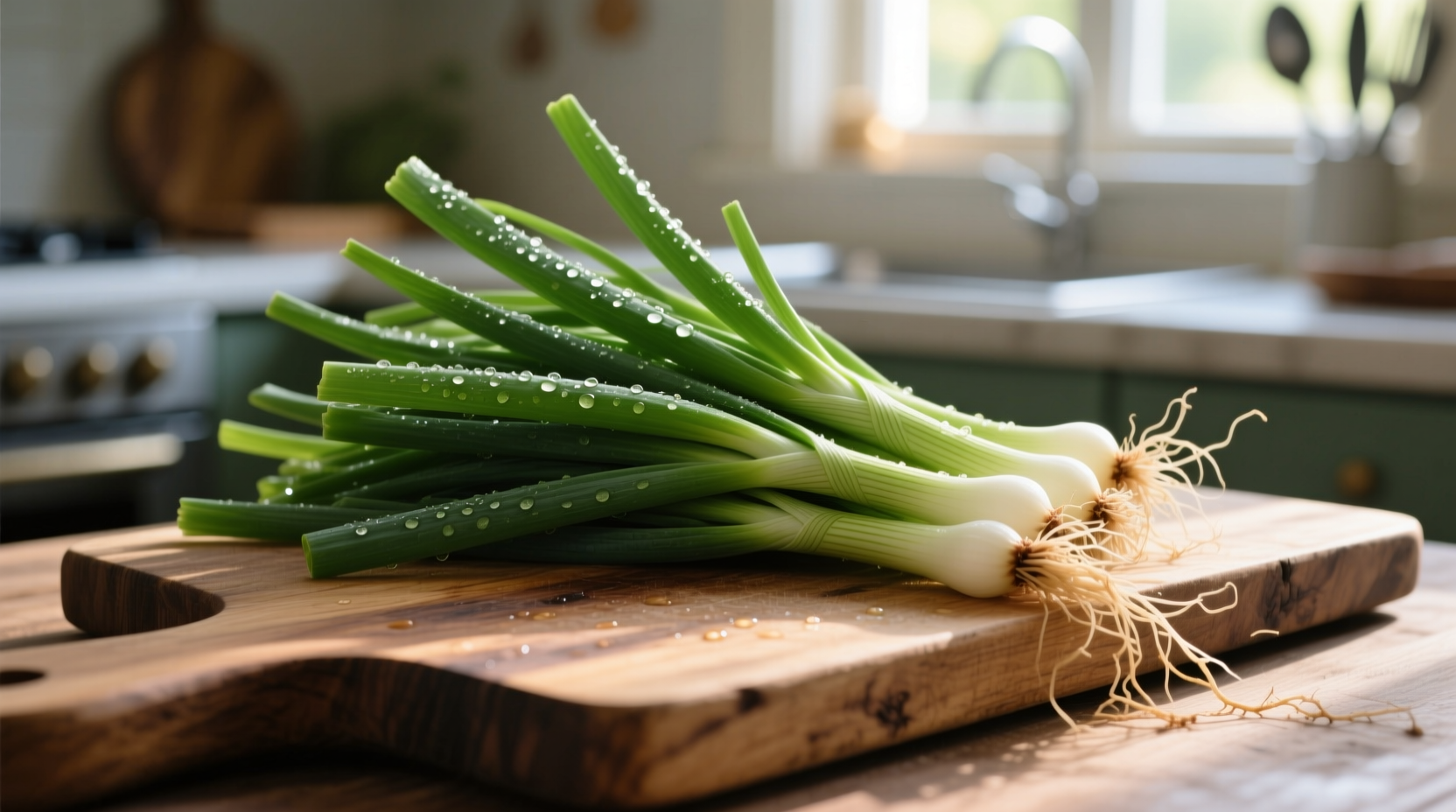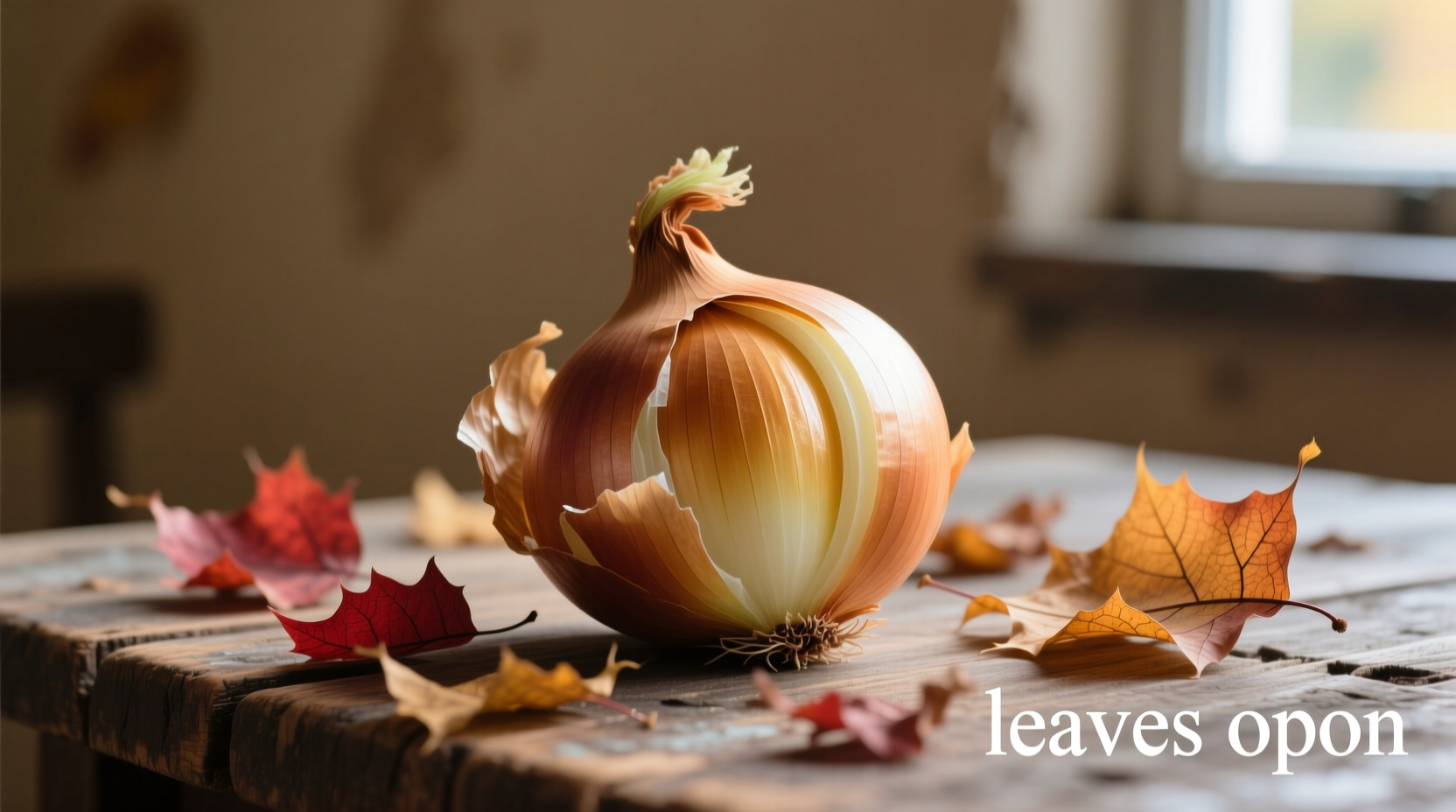Onion leaves, also known as scallions, green onions, or spring onions, are the green, hollow stalks that grow above ground from the onion plant. Unlike the bulb we typically associate with onions, these leaves offer a milder, fresher flavor and can be used raw or cooked in numerous culinary applications. Harvested before the bulb fully develops, onion leaves provide essential nutrients including vitamin K, vitamin C, and antioxidants that support bone health and immune function.
Understanding Onion Leaves: More Than Just Garnish
When you see those vibrant green stalks bundled at the farmers' market, you're looking at one of nature's most versatile culinary ingredients. Onion leaves represent an early growth stage of the onion plant (Allium cepa) that many home cooks overlook despite their exceptional flavor and nutritional profile. Unlike mature bulb onions that develop underground, these tender green shoots grow above ground and offer a completely different culinary experience.
Onion Leaves vs. Bulb Onions: Key Differences
| Characteristic | Onion Leaves | Bulb Onions |
|---|---|---|
| Flavor Profile | Mild, fresh, grassy with subtle onion notes | Strong, pungent, sweet when cooked |
| Texture | Crisp and tender when fresh | Firm and layered |
| Harvest Time | 60-90 days after planting (before bulb formation) | 100-170 days after planting |
| Nutritional Highlights | Higher in vitamin K and carotenoids | Higher in quercetin and sulfur compounds |
| Culinary Best Uses | Raw applications, finishing garnishes, quick cooking | Longer cooking, foundational flavors, caramelizing |
When and How to Harvest Onion Leaves
Timing is crucial when harvesting onion leaves for optimal flavor and texture. The ideal harvesting window follows a precise timeline that varies by climate and onion variety:
- Early spring (60 days after planting): First harvest window when leaves reach 6-8 inches tall - most tender with mildest flavor
- Late spring (75 days after planting): Peak flavor development with balanced onion notes
- Early summer (90 days after planting): Final harvest before bulb begins forming - slightly stronger flavor
According to agricultural research from the University of California Cooperative Extension, harvesting in the morning after dew has dried yields the crispest, most flavorful leaves with maximum nutrient retention. Use sharp scissors to cut 1-2 inches above the soil line, allowing the plant to continue producing new growth for multiple harvests.
Culinary Applications: Beyond Just Garnish
Professional chefs utilize onion leaves in three distinct culinary applications based on their maturity:
- Raw applications: Thinly sliced young leaves add vibrant color and mild onion flavor to salads, sushi, and cold noodle dishes without overwhelming other ingredients
- Quick cooking: Medium maturity leaves withstand brief stir-frying or sautéing, developing subtle sweetness while maintaining texture
- Infused bases: More mature leaves create flavorful stocks and broths when simmered for 20-30 minutes
When preparing onion leaves, separate the white base (which has stronger flavor) from the green tops (more delicate flavor) to maximize their culinary potential. The white portion works well in cooked applications while the green portion shines in raw preparations.

Preservation Techniques for Maximum Freshness
Onion leaves have a limited shelf life but proper storage can extend their usability. Research from the USDA Agricultural Research Service shows these preservation methods maintain maximum nutritional value:
- Refrigeration: Store in a glass of water with the roots submerged, covered with a plastic bag in the refrigerator (up to 10 days)
- Freezing: Chop and freeze in ice cube trays with water or oil for cooking applications (up to 6 months)
- Drying
- Context boundaries: Onion leaves become too fibrous and develop an unpleasant texture when the bulb begins forming. Once the white base reaches 1/2 inch in diameter, the leaves lose their culinary appeal for raw applications. In warmer climates, this transition happens more quickly, requiring more frequent harvesting.
Nutritional Powerhouse You're Missing
While many discard onion leaves, they actually contain higher concentrations of certain nutrients than the bulb. According to USDA FoodData Central, 100g of raw green onion leaves provides:
- 207% of your daily vitamin K requirement (critical for bone health)
- 31% of daily vitamin C (supports immune function)
- Significant amounts of vitamin A, calcium, and folate
- Antioxidants including lutein and zeaxanthin (beneficial for eye health)
These nutritional benefits make onion leaves particularly valuable for populations at risk of vitamin K deficiency, including older adults and those with certain digestive conditions. Unlike bulb onions which lose some nutrients during cooking, the nutrients in onion leaves remain largely intact even with light cooking.
Common Questions About Onion Leaves
Can you eat onion leaves raw?
Yes, onion leaves are excellent raw and provide the mildest onion flavor. Younger leaves are particularly tender and work well in salads, sandwiches, and as garnishes without the strong bite of mature bulb onions.
How do you know when onion leaves have gone bad?
Spoiled onion leaves become slimy, develop dark spots, and lose their crispness. They'll also emit a sour or unpleasant odor when spoiled. Fresh leaves should be vibrant green with firm texture throughout.
Are onion leaves the same as chives?
No, they're different plants. Chives (Allium schoenoprasum) are a separate species with thinner, solid stems and a more delicate flavor. Onion leaves come from regular onion plants and have hollow stems with more pronounced onion flavor.
Can you regrow onion leaves from kitchen scraps?
Yes, place the white root end in a glass of water on a windowsill. Change the water every 2-3 days and you'll see new green growth within 3-5 days. This works best with fresh scraps and provides a continuous harvest of young onion leaves.











 浙公网安备
33010002000092号
浙公网安备
33010002000092号 浙B2-20120091-4
浙B2-20120091-4